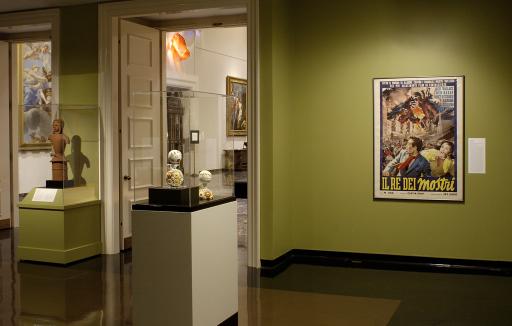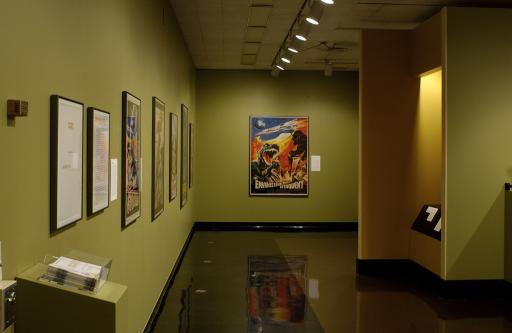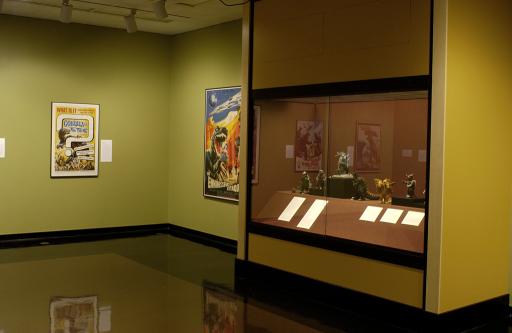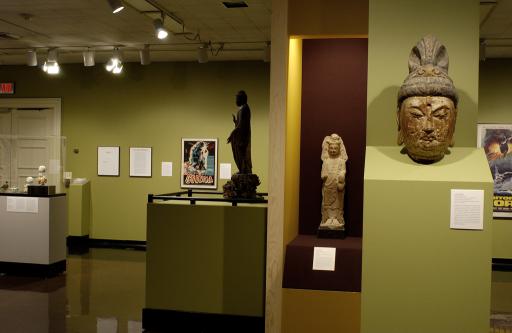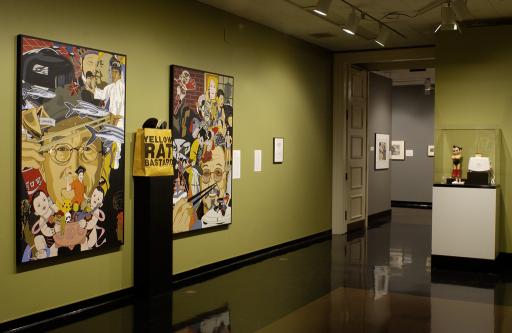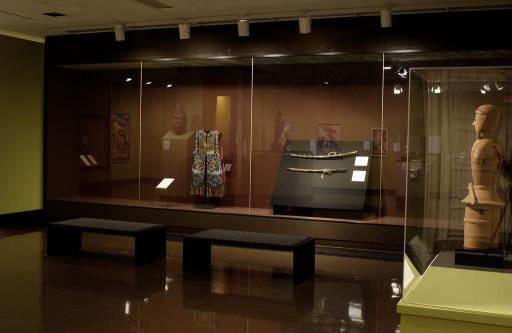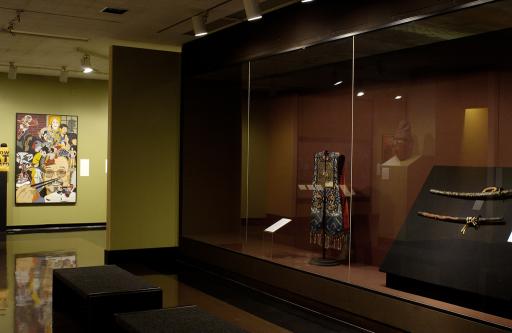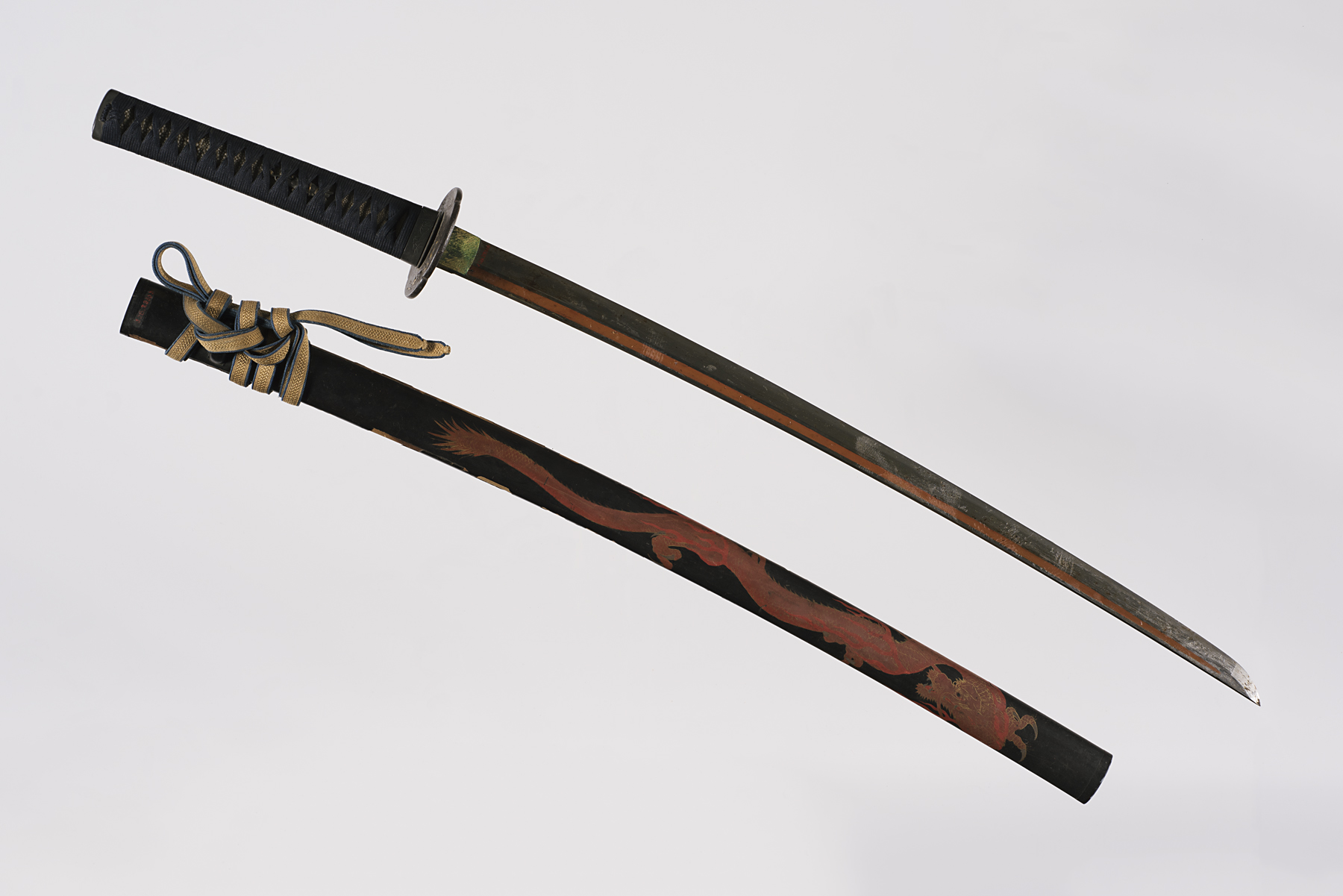Pop Goes Godzilla: Japanese Pop Culture and Globalization
Exhibition Overview

This exhibition is organized in conjunction with the KU Center for East Asian Studies interdisciplinary symposium, "In Godzilla's Footsteps: Japanese Pop Culture Icons on the Global Stage," October 27--30, which commemorates the 50th anniversary of the release of Gojira, the original Godzilla film. Organized by María Román Navarro, Curator of Asian Art, and Carpenter Foundation Asian art intern Kyungwon Choe, the exhibition comprises three major categories of Japanese popular culture that have won mass appeal and made worldwide impact since the 1950s: the Godzilla film character, more recent pop-culture icons, and pop-art imagery.
* The visually arresting and culturally diverse Godzilla images of different countries and mediums--film posters, a print, and manufactured products from private collections--tell an interesting story of the Godzilla character's evolution from the 1950s through the 1970s and feature Godzilla as a forerunner of postwar Japanese cultural industry, which has enjoyed huge international success.
As cheap and accessible forms of entertainment, Japanese comic books (manga) and animation films (anime) have grown to enormous popularity worldwide since World War II. Various characters from manga and anime have immediately become global pop culture icons, inspiring manufactured products, commodities, advertising, and fashion around the world. The Astro Boy and Hello Kitty character products on view serve as examples of Japan's widespread pop culture exports. Such products illustrate how ubiquitous these visual conventions have become. For example, a good luck charm (omamori) shows the transference of a secular cultural icon into a traditional Buddhist realm. Further, Roger Shimomura's painting, Yellow Rat Bastard (a racial epithet often used in the U.S. during World War II to describe the Japanese) demonstrates a wide incorporation of various Japanese pop icons into contemporary art works.
* Unlike American pop art of the 1960s, which was influenced by the changing look of the city--new advertisements, development of media photography and mass production--contemporary Japanese pop art has developed under the influence of new technology, such as video games and computers, and reflects the taste of the people who consume those technologies, many of whom are manga and anime fans. Murakami Takashi's toy-like plastic sculptures, from the series Oval Sitting atop a Cosmos Ball, unmistakably reveal Japanese pop culture as their main references. Murakami, who runs his "Hiropan Factory" studios in both Japan and New York City, is one of the pivotal artists transplanting Japanese pop culture and art in international soil.
Organized in conjunction with "In Godzilla's Footsteps: Japanese Popular Culture Icons on the Global Stage," an interdisciplinary symposium hosted by The Center for East Asian Studies at the University of Kansas, October 28-30, 2004. Programming for this exhibition is supported in part by the Kansas Arts Commission, a state agency, and the National Endowment for the Arts, a federal agency.
Organized in conjunction with “In Godzilla’s Footsteps: Japanese Popular Culture Icons on the Global Stage,” an interdisciplinary symposium hosted by The Center for East Asian Studies at the University of Kansas, October 28-30, 2004. Programming for this exhibition is supported in part by the Kansas Arts Commission, a state agency, and the National Endowment for the Arts, a federal agency.
Sabatini and Associates, Corporate Sponsor
Fifty years ago this fall, movie audiences first laid eyes on one of film’s most enduring icons. Godzilla, the radioactive lizard whose fiery temper tantrums trashed Tokyo in the 1954 release Gojira, eventually reached far beyond mere creature feature stature, becoming the first Japanese pop culture product to gain mass appeal in the United States after World War II.
The Godzilla film series is now the longest running franchise in world cinema history, and to commemorate the King of the Monsters' 50th birthday, the Spencer has organized Pop Goes Godzilla: Japanese Pop Culture & Globalization. The museum’s exhibition, featuring many loaned objects from private collections, is organized by Maria Roman Navarro, curator of Asian art, and Kyungwon Choe, Carpenter Foundation Asian art intern. Pop Goes Godzilla comprises three major categories of Japanese popular culture that have won mass appeal and made worldwide impact since the 1950s: the Godzilla film character, more recent pop-culture icons, and pop-art imagery.
